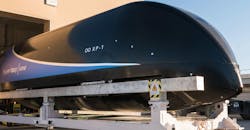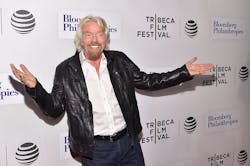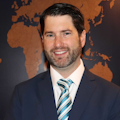Crazy Train: Hyperloop Back on Track After Sexual Harassment Allegations
Sir Richard Branson has assumed the role of Virgin Hyperloop One chairman after Shervin Pishevar left the company last week after six women accused the startup's co-founder, who was often the face of the company, of sexual misconduct and harassment. In October, Branson entered a global strategic partnership with Hyperloop One, thus adding "Virgin."
By subtracting Pishevar, who also resigned from Sherpa Capital due to the allegations, the company can now focus exclusively on trying to disrupt modern transportation through its vacuum sealed passenger and cargo pods that may someday travel 670 mph.
Silicon Valley "Super Angel" Ron Conway also warned the failed Hillary Clinton presidential campaign not to align itself with Pishevar last year due to his treatment of women, according to Forbes. At a subsequent fundraiser, the former First Lady took selfies with him and signed his book with a personalized message to his daughter: “break whatever glass ceiling you want!”
Still, the project is steadily moving forward. The company announced it has just reached 240 mph on its Nevada test track, DevLoop, so it still has a long way to go. Successfully tested components the airlock, highly efficient electric motor, advanced controls and power electronics, custom magnetic levitation and guidance, pod suspension, and the vacuum, the company says.
Earlier this year, Virgin Hyperloop One selected ten regions around the world (with six from North America) to develop the first high speed networks harnessing the technology theorized by Elon Musk. With the announcement of Branson stepping in and the new speed milestone, the company also revealed an influx of $50 million in Series C funding, raising the three year total to $295 million.
"We continue to see extremely strong interest from world leaders globally looking to embrace hyperloop to address critical infrastructure challenges," says CEO Rob Lloyd. "Our focus in 2018 will be on accelerating commercial agreements for both passenger and cargo projects."
Virgin Hyperloop One excepts to have the first system up and running by 2020.
About the Author
John Hitch
Editor, Fleet Maintenance
John Hitch, based out of Cleveland, Ohio, is the editor of Fleet Maintenance, a B2B magazine that addresses the service needs for all commercial vehicle makes and models (Classes 1-8), ranging from shop management strategies to the latest tools to enhance uptime.
He previously wrote about equipment and fleet operations and management for FleetOwner, and prior to that, manufacturing and advanced technology for IndustryWeek and New Equipment Digest. He is an award-winning journalist and former sonar technician aboard a nuclear-powered submarine where he served honorably aboard the fast-attack submarine USS Oklahoma City (SSN-723).


